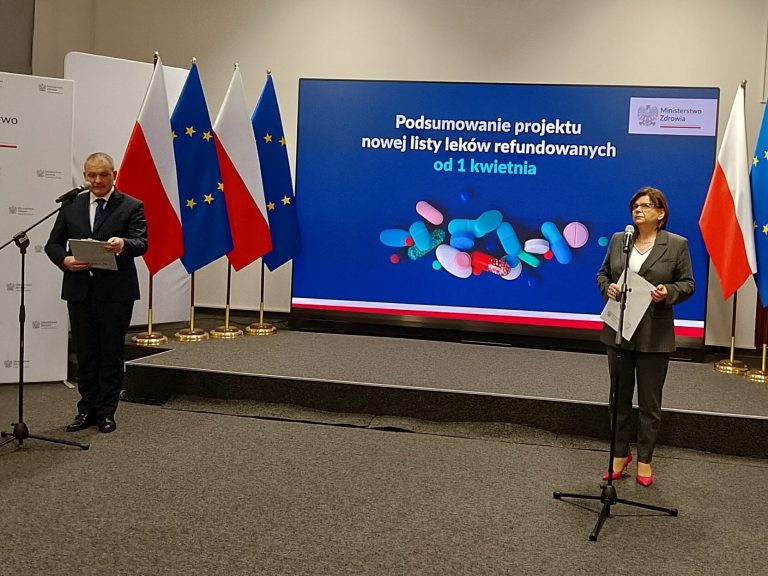Cardioversion – indications, preparation, course, complications and effectiveness

Cardioversion is a medical procedure that allows the restoration of normal heart rhythm in patients with cardiac arrhythmias. The indication for cardioversion is tachycardia accompanied by atrial fibrillation and atrial flutter. Cardioversion is performed in emergency situations and on doctor’s orders, including: in patients in whom other methods of treating arrhythmia have proven ineffective. What is the cardioversion procedure? We explain.
- What is cardioversion?
- Indications for electrical cardioversion
- Electrical cardioversion – course
- Do I need to prepare for electrical cardioversion?
- Possible complications of electrical cardioversion
- How effective is cardioversion?
Heart rhythm disorders (arrhythmias) pose a serious threat to health and life. They require specialized treatment to restore normal sinus rhythm. Tachycardia manifests itself by too fast heart rate and leads to atrial fibrillation and atrial flutter. Too fast heart rate may impair proper blood flow to organs, as well as coronary vessels and the brain, which leads to blood supply disorders and tissue hypoxia.
What is cardioversion?
Cardioversion is a procedure that has been performed for several decades. Thanks to cardioversion, it is possible to restore normal heart rhythm in patients with tachycardia.
There are two types of cardioversion – pharmacological cardioversion and electrical cardioversion. Pharmacological cardioversion involves administering drugs to the patient that regulate the heart rhythm. Electrical cardioversion is a procedure performed in a hospital setting. Thanks to electrodes placed on the patient’s chest, an electrical impulse is sent, which passes through the heart, restoring normal sinus rhythm.
Electrical cardioversion should not be confused with defibrillation. In the case of electrical cardioversion, the electrical impulse is properly synchronized with the heartbeat. Electrical cardioversion is aimed at restoring the heart’s normal rhythm when it beats too fast. The electrical discharge during electrical cardioversion causes the heart to stop beating for a fraction of a second, which helps reduce excessive stimulation of the heart muscle. Defibrillation is a procedure used during cardiopulmonary resuscitation in people whose heart has stopped beating.
Heart rhythm disorders, including: atrial fibrillation may lead to various complications. Abnormal heart function is not always associated with unpleasant symptoms and health ailments. In some patients, cardiac arrhythmias associated with tachycardia cause, among others, dizziness, feeling of palpitations, sudden weakness and shortness of breath, but heart rhythm disorders may also be asymptomatic.
Indications for electrical cardioversion
Indications for emergency electrical cardioversion are suddenly occurring cardiac arrhythmias (mainly atrial fibrillation and atrial flutter) accompanied by circulatory disorders. In this case we are dealing with a life-threatening condition.
Planned electrical cardioversion is performed in patients who do not have circulatory disorders. The indication for the electrical cardioversion procedure planned by the doctor is the lack of effectiveness of pharmacological treatment, as well as contraindications to its initiation. Planned cardioversion requires appropriate patient preparation. Before performing planned cardioversion, anticoagulants are administered to prevent serious complications.
Electrical cardioversion – course
Before electrical cardioversion in men, it may be necessary to shave the chest. Electrical cardioversion is performed under anesthesia – the patient is asleep and does not feel pain. The doctor establishes an intravenous line through which painkillers, sedatives and sleeping pills are administered. Typically, anesthesia before cardioversion does not require intubation.
During the electrical cardioversion procedure, it is necessary to monitor vital signs using specialized medical equipment. It is monitored, among others: patient’s heart rhythm. In approximately 75% of all patients who undergo the procedure, electrical cardioversion allows the arrhythmia to be interrupted and the heart to function normally again.
It is worth knowing that the same device is used to perform electrical cardioversion and defibrillation. Before the doctor starts electrical cardioversion, he changes the defibrillator settings. The electrical discharge that regulates the patient’s heart rhythm is generated by the defibrillator paddles. The doctor applies the defibrillator paddles to the chest or chest and back; an electrical impulse can also be transmitted via electrodes. The energy of the electrical discharge depends on the type of cardiac arrhythmia.
The electrical cardioversion procedure takes about 30 minutes. After the procedure, the patient is observed for at least several hours in a hospital setting. Depending on the patient’s health and condition, he is discharged home after observation or stays in the hospital a little longer.
Important – due to the use of anesthetic drugs that affect the ability to drive, remember that you cannot drive a car for 24 hours after the procedure.
Do I need to prepare for electrical cardioversion?
There is no special preparation required for electrical cardioversion. The doctor planning to perform the electrical cardioversion procedure will inform you about the need to, for example, stop taking or change the dosage of medications. In some cases, additional tests are performed before electrical cardioversion, e.g. echocardiography. Do not apply creams, lotions or other preparations to the chest 24 hours before the procedure, as they may disturb the flow of electricity.
Possible complications of electrical cardioversion
Cardiac arrhythmias may lead to the formation of clots in the atria of the heart, which, after normal heart function is restored, may penetrate into the heart chambers. Blood clots pose a serious threat to health and life. A thrombus that travels from the left atrium to the left ventricle and then into the bloodstream may lead to acute organ ischemia. A clot that travels from the right atrium of the heart to the right ventricle and penetrates the bloodstream may cause pulmonary embolism.
How effective is cardioversion?
The effectiveness of cardioversion in atrial fibrillation depends on the duration of the disease. In patients with atrial fibrillation that persists for approximately 12 months, the chance of successful cardioversion is up to 90%. Electrical cardioversion can interrupt atrial fibrillation and restore normal sinus rhythm in approximately 75% of all patients. The effectiveness of the treatment decreases with the duration of the disease.
The situation is slightly different in the case of atrial flutter – the effectiveness of cardioversion in atrial flutter does not depend on the duration of the disease and is 90-100%. Atrial flutter has a lower risk of clot formation and related complications (heart attack, stroke, pulmonary embolism), but anticoagulant treatment is used before the procedure.
If electrical cardioversion cannot restore normal heart rhythm, other treatment is necessary.
Sources:
-
PA Ptaszyński, J. Ruta, JH Goch, D. Berent, Electrical cardioversion of atrial fibrillation – 40 years since the method was introduced into clinical practice, Cardiovascular Forum, 11/1, 2006
-
A. Szczeklik, Internal diseases, Volume I, Medycyna Practical Publishing House, Kraków, 2005






